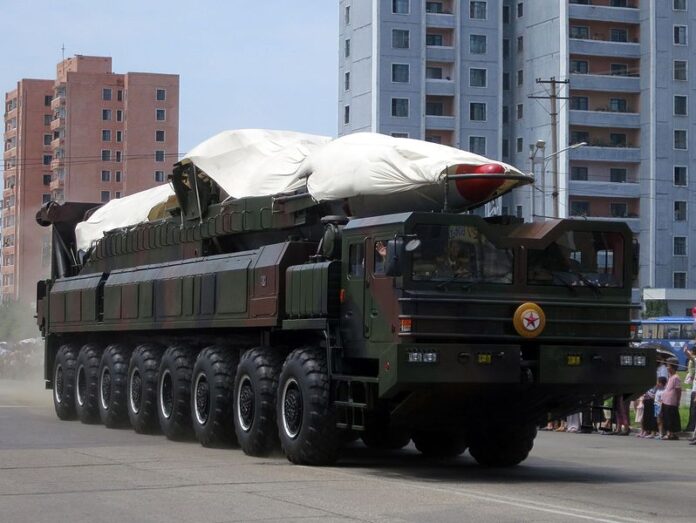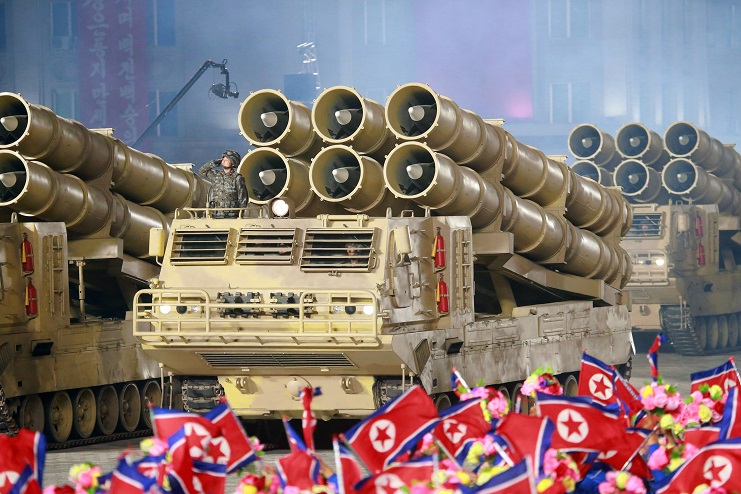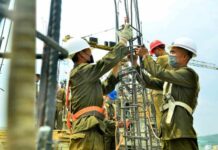
On Jan. 4, White House National Security Council spokesman John Kirby informed reporters that North Korea had provided Russia with ballistic missiles that were utilized in separate strikes on Dec. 30 and Jan. 2 as part of the Russian war effort in Ukraine. Dec. 30 saw “at least one” missile launched, while Jan. 2 saw “multiple North Korean ballistic missiles” launched. As has been widely speculated by analysts for over a year, Kirby stated that North Korea was expected to be paid for these missile deliveries with Russian fighter planes, surface-to-air missiles, armored vehicles, and other material and technology transfers. Although the Northeast Asian country’s defense sector is capable of producing most asset types already, Russian technologies could help it enhance many of its domestic programs while new fighters, which North Korea cannot produce independently, have long been sought after.
Although US government sources have reported since the summer of 2022 that North Korea was arming Russian forces in Ukraine, previously reported equipment transfers were comprised of much lower profile assets such as infantry rockets and artillery rounds, rather than complete higher-end systems. This provided little opportunity for the North Korean defense sector to gain attention other than for the sheer quantity of its output. While Russia has frequently been disparaged in Western reporting for looking to North Korea for ammunition, it has generally gone unsaid that North Korea’s artillery forces before 2022 were the largest in the world, and significantly larger than Russia’s own. This made its industry and stockpiles some of the most valuable for an Eastern European war heavily shaped by artillery duels and by which country’s ammunition supplies runs out sooner. Much as Russia looked to North Korea, so too did Western intelligence agencies scour markets across the world for ammunition for Ukraine – with the US making significant artillery acquisitions from South Korea, which also has among the world’s largest stockpiles – to facilitate greater transfers to its embattled Eastern European ally. The transfer of North Korean artillery rounds, despite its significance, nevertheless failed to highlight the capabilities the country’s new complete systems were offering, including that the Northeast Asian country fielded and produced both self-propelled howitzers and mobile rocket artillery systems with significantly longer ranges – and in the latter case much larger calibers – than those in Russian service.
With North Korea’s defense sector having from the late 2010s fully moved past its Cold War era technology levels, and introduced a growing range of new generation assets with capabilities that were truly internationally competitive, Russian acquisitions of some of its neighbor’s latest ballistic missiles will – for the first time – place at least one of these assets in a high-intensity combat zone. Moreover, it will do so in the most high profile and geopolitically significant war zone in the world, and at what increasingly appears to be a turning point in the conflict, with Washington having fully exhausted all funding for aid to Ukraine, Western sources widely reporting of increasingly serious Ukrainian munitions shortages, and Russian forces continuing to take ground. North Korean ballistic missiles introducing important new capabilities to the Russian armed forces, and at such a pivotal time in the war, is thus certain to gain them considerable international attention – including from potential clients.
Although not naming the class of North Korean ballistic missile used by Russian forces, the White House did reveal that it had a maximum range of 550 miles or 900 kilometers. With North Korea unlikely to have transferred Hwasong-9 ballistic missiles – a design from the 2000s otherwise known as the Scud-ER – the only other missile known to have such a range is one which Russia has long been likely to have an interest in, the KN-23B. The baseline KN-23 ballistic missile system, which is thought to have entered service in 2019, is considered a broad North Korean analogue to the Russian Iskander-M, which has been used very extensively in Ukraine and before that prioritized for acquisitions funding for close to two decades. Both used four-wheeled launch vehicles and fly on irregular semi-ballistic depressed trajectories with the ability to conduct extensive in-flight manoeuvres throughout – what North Korean state media referred to as “irregular orbit” with “low-altitude gliding leap type flight mode,” and otherwise as a “peculiar mode of guiding flight.”

Despite their similarities, the KN-23’s missiles are approximately 20% larger than the Iskander-M system’s 9K720 missiles, have smooth bases, and were designed with visibly much larger cable raceways, which indicates a far greater fuel capacity. Accordingly, the KN-23 has a 40% longer engagement range of 700 kilometers, compared to 500 kilometers for the Iskander-M. The KN-23B, which uses a ten-wheel launch vehicle and is considerably larger than even the original KN-23, was first test launched on March 25, 2021, and can itself reach targets 900 kilometers away. This and its missiles’ warheads set it well apart from the Iskander-M, with each reported to carry a 2,500 kilograms warhead compared to the Iskander-M missiles’ 700 kilograms, which has very significant implications for its effectiveness against a range of targets. This is perhaps made most evident by the Russian tactic reported from mid-November of launching multiple missiles at intervals against the same Ukrainian frontline units – referred to in Russian media as “double strikes” – to maximize casualties. The KN-23B could potentially yield similar casualties with a single strike and could be considerably more potent against fortifications.
Despite their design similarities and commonalities in their trajectories, the KN-23B’s much longer range has made it operationally difficult to mistake for the Iskander-M. Indeed, the ability to strike targets 900 kilometers away may well have been a primary factor that alerted US and other Western intelligence agencies to the missile’s deployment, where the baseline KN-23 may well have continued to be mistaken for the Iskander-M for some time. The discrepancy in range allows each KN-23B launcher to engage targets across an area 324% the size of the area over which an Iskander-M launcher can. This is particularly significant since road mobile vehicles move relatively slowly, so the ability to engage a much wider range of targets from where the launcher is positioned allows for far more rapid responses to changes in the frontline situation. The fact that this can be done with a warhead reported to be 360% as large only further increases the appeal of the asset for Russian forces. This range also helps negate Ukraine’s considerable strategic depth as Europe’s largest country, which had previously limited the range of key industrial targets and airfields that Iskander-Ms could strike, and thus forced Russian forces to rely on air or sea-launched missile assets to engage targets deeper behind enemy lines.
Although Russian sources may seek to mask it – both to avoid unfavorable comparisons with their indigenous assets and to refrain from admitting to open violation of United Nations Security Council (UNSC) arms embargoes on North Korea – the KN-23B’s capabilities are likely to gain considerable international attention. This, in turn, may well improve perceptions of the capabilities of the North Korean defense sector, which is producing what are effectively the most dangerous ballistic missile systems on either side of the conflict zone even though weapons from all over the world are being operated there. Russia’s participation in the Missile Technology Control Regime, unlike North Korea, has also widened the discrepancy in the capabilities of the ground-launched missiles the Russians can export, with Iskander-Ms sold abroad accordingly restricted to 300 kilometers ranges. This contrasts sharply with Pyongyang’s ability to approve sales of missiles with any range the client requires. Furthermore, Russia, despite being a permanent member of the UNSC, is openly violating the arms embargoes placed on Pyongyang, which could pave the way for other states to more willingly follow suit. While arms embargoes on North Korea have been widely ignored – from Eritrea, Sudan (pre-2019), and Uganda to Iran, Egypt, and Sri Lanka – Russia’s position in the international community, and on the very same UN council that imposed the embargoes, sets a potentially game-changing precedent for the wider non-Western world’s willingness to look to Pyongyang for their military equipment needs.
Edited by Robert Lauler.
Views expressed in this guest column do not necessarily reflect those of Daily NK.

















